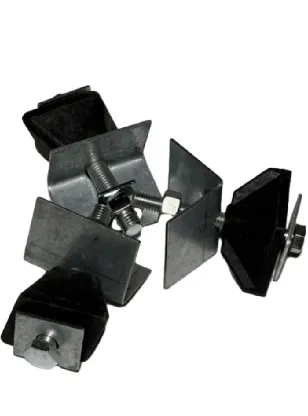loading...
- No. 9, Xingyuan South Street, Dongwaihuan Road, Zaoqiang County, Hengshui, Hebei, China
- admin@zjcomposites.com
- +86 15097380338
- Welcome to visit our website!
fiber reinforced polymer bars
The Advantages and Applications of Fiber Reinforced Polymer Bars
Fiber reinforced polymer (FRP) bars have emerged as an innovative solution in the construction and engineering industries, providing a lightweight, corrosion-resistant alternative to traditional materials such as steel. This advanced composite material, primarily composed of a polymer matrix reinforced with fiber, offers numerous benefits that make it an ideal choice for a variety of structural applications.
Composition and Manufacturing
FRP bars are typically made from a combination of fiberglass, carbon fiber, or aramid fibers embedded in a polymer matrix. The manufacturing process often involves techniques such as pultrusion or filament winding, which ensure that the fibers are aligned in a manner that maximizes strength and performance. The resulting bars exhibit exceptional tensile strength, stiffness, and durability, along with reduced weight compared to steel reinforcements.
Key Advantages
1. Corrosion Resistance One of the standout features of FRP bars is their resistance to corrosion. Unlike steel, which can degrade when exposed to moisture and harsh chemicals, FRP materials are immune to these challenges. This property makes FRP bars particularly suitable for use in environments such as coastal areas and industrial settings where chemical exposure is a concern.
2. Lightweight The lightweight nature of FRP bars simplifies handling and installation processes, leading to reduced labor costs and shorter construction times. This characteristic is especially beneficial in concrete structures where heavy steel reinforcements can increase logistical challenges during construction.
3. Non-Magnetism FRP bars do not conduct electricity and are non-magnetic, making them suitable for applications in sensitive environments such as chemical plants, power plants, and facilities with magnetic fields. This property helps to ensure the safety and functionality of equipment in these settings.
4. Enhanced Durability FRP bars are designed to last, with a lifespan that can exceed that of traditional materials. Their resistance to environmental factors contributes to the long-term integrity of structures, reducing the need for frequent repairs and maintenance.
5. Design Flexibility The versatility of FRP materials allows for innovative design solutions. Engineers can take advantage of unique shapes and sizes that traditional materials cannot accommodate, leading to more aesthetically pleasing and functionally efficient structures.
fiber reinforced polymer bars

Applications
The unique properties of fiber reinforced polymer bars open the door to a wide array of applications.
- Infrastructure Projects FRP bars are increasingly being used in the construction of bridges, highways, and tunnels. Their lightweight nature and resistance to corrosion make them ideal for reinforcing concrete in exposed environments, extending the longevity of these critical structures.
- Marine Applications In marine environments, where structures are constantly exposed to seawater, FRP bars provide a reliable solution for docks, piers, and seawalls. Their resistance to saltwater corrosion allows for safer and cost-effective construction.
- Seismic Retrofitting FRP bars have gained popularity in the retrofitting of structures in seismic zones
. By reinforcing existing buildings, engineers can improve their earthquake resistance without significantly increasing the weight of the structure.- Road and Rail Systems The use of FRP bars in rail ties and road bases enhances durability while minimizing maintenance needs. Their lightweight and corrosion-resistant properties contribute to safer and longer-lasting transportation systems.
Future Prospects
As technology continues to advance, the potential applications for fiber reinforced polymer bars are expected to expand even further. Research into new fiber materials and polymer formulations may yield products with improved performance, opening doors to innovative solutions in construction and civil engineering.
In conclusion, fiber reinforced polymer bars represent a significant advancement in structural reinforcement technology. Their unique combination of lightweight, corrosion resistance, and design flexibility makes them an attractive choice for a wide range of applications. As more engineers and architects recognize the benefits of FRP materials, it is likely that their prevalence in construction projects will continue to grow, paving the way for safer, more sustainable, and innovative infrastructure.
-
Transform Your Spaces with FRP Grating SolutionsNewsNov.04,2024
-
The Versatility and Strength of FRP RodsNewsNov.04,2024
-
The Excellence of Fiberglass Water TanksNewsNov.04,2024
-
The Benefits of FRP Grating for Your ProjectsNewsNov.04,2024
-
Elevate Your Efficiency with FRP Pressure VesselsNewsNov.04,2024
-
Welcome to the World of FRP Pressure VesselsNewsOct.12,2024
-
Unveiling the Future of Filtration: Why FRP Filter Vessels are a Game ChangerNewsOct.12,2024
